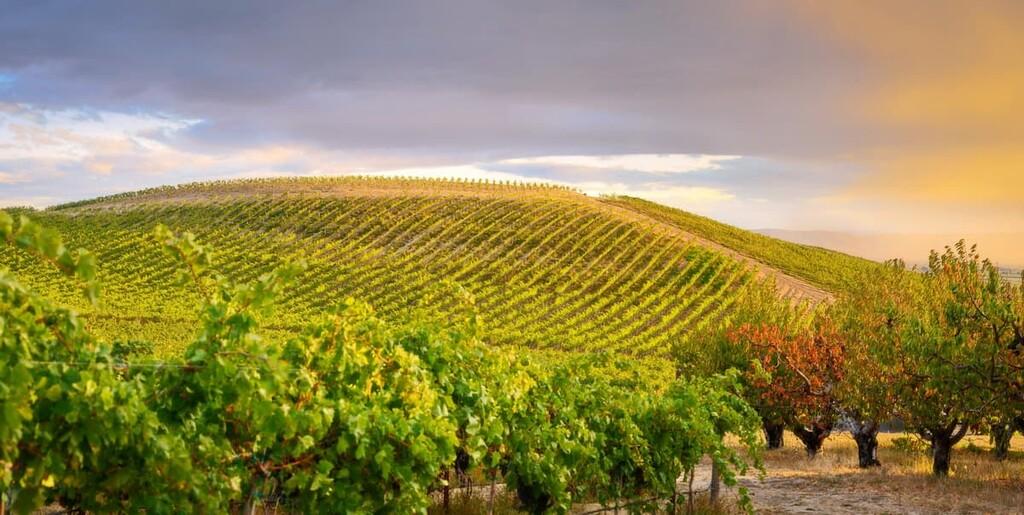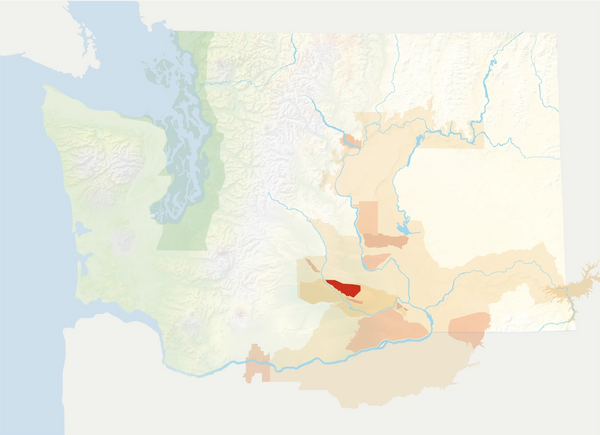
Rattlesnake Hills AVA
The appellation is named after the hills by Rattlesnake Mountain, which itself is named after the Northern Pacific Rattlesnake that inhabits the area.
Key statistics
2006
1,807 acres
6-12 inches

Characteristics
About the region
The east-west trending Rattlesnake Hills are an anticline of the Yakima fold belt, a series of geologic folds that define a number of viticultural regions in Washington. The appellation, which is centered around the town of Zillah, lies on the south slope of the Rattlesnake Hills.
The Rattlesnake Hills’ distinguishing feature is its elevation relative to the surrounding area. Elevations range from 850 feet (259 m) to 3,085 feet (940 m), although vineyard plantings are limited to the lower-lying areas. The appellation’s heightened elevation lessens the risk of spring and fall frosts. Additionally, winter temperatures are warmer than the surrounding area, limiting the danger of hard freezes.
As a growing region, Rattlesnake Hills is almost evenly split between red and white wine grape varieties with reds having a slight edge. The predominant soil types are silt-loam and loam. Notably, vineyards at higher elevations are above the levels of the Missoula Flood, a series of cataclysmic events that define much of the Columbia Valley growing region.
A sub-appellation of the Yakima Valley (itself a sub-appellation of the Columbia Valley), the Rattlesnake Hills has an arid, continental climate and receives an average of 6 to 12 inches of rainfall annually. Irrigation is therefore required to grow vinifera grapes.
The earliest vines at Rattlesnake Hills were planted in 1968.

